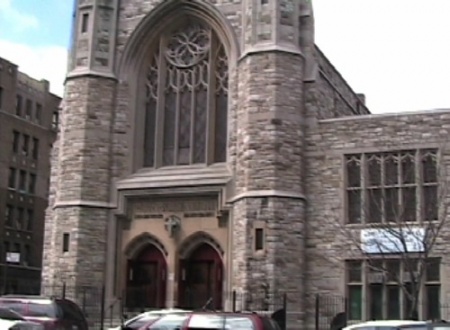Washington Heights: Evolution
From Decoding New York
| Introduction |
| Washington Heights |
| * Evolution |
| * Here v. There |
| * What's Real |
| * Economy |
| Rego Park |
| * Evolution |
| * Here v. There |
| * Economy |
| Comparison |
| * Photo Gallery |
| * Sources
|
According to Nancy Foner from her text, "New Immigrants in New York," Washington Heights in the past had been an area that many Greek and Irish immigrants along with Soviet Jewish immigrants would flock to during the early 1900s. She notes that Washington Heights used to be a cultural hub for Soviet Jews, who enlivened this fading area and economy by introducing new "accented nightclubs, Georgian restaurants and sushi bars, state-of-the-art electronics stores, and international groceries" (Foner 264).
In 1965 the United States began to loosen its immigration law restrictions, leading to a massive influx of Spanish-speaking immigrants from South and Central America and the Carribean. Although, Puerto Ricans used to be the most prevelant Hispanic population segment in Washington Heights, they began to become out numbered by Cubans and Dominicans (Ricourt 4).
Susan Dicker observes that as waves of Cuban and Dominican immigrants were arriving in increasing numbers during the 1980's, the crack epidemic was at its height, and many new citizens were having trouble earning a living in an area that seemed to be physically breaking down. Supposedly, one of the factors that added to these unfavorable living conditions was that, "legitimate businesses and government services were being filled by local, subeconomy enterprises" (Dicker 722).
Ultimately, the area became heavily dominated by Dominicans. For example, according to Milagros Ricourt, by 1990, 65 % of the Hispanic population in Washinton Heights was comprised of Dominicans, with Puerto Ricans, Ecuadorians, Colombians, Mexicans and others comprising the tail end (4).
One of Susan Dicker's interview subjects in her research upon Washington Heights reported that she had noticed a shift in attitude in the area because, when she was a child in the early 1990s, she remembered feeling that being Dominican was something to be ashamed of, whereas now she feels that it has become more cool, accepted and embraced to express and embody the Dominican heritage (Dicker 722).
This trend toward a greater amount of local, and ethnic pride seems acurate because the modern day Washington Heights that I visited was an area that seemed to cater to and embrace its Spanish speaking residents. I observed hundreds of local business with signs only in Spanish, that were tailored to the Dominican population, and run by Dominican residents. Even the local McDonald's had menus written only in Spanish, and served only dishes presumed to be extensions of that population like burritos, enchiladas, and rice and beans.
Ironically, despite the area's vast history of influences, I didn't see evidence of one Jewish or Irish related institution. In fact, with the exception of the occasional Chinese restaurant, or nail salon run by workers from Vietnam, the area was almost entirely Hispanic with Spanish speakers and Spanish businesses all around.
The only other noticable cultural influence prevalent throughout the streets flooded with Hispanic business and culture were three Greek Orthodox churches.
This section on Washington Heights and Rego Park developed by Irina Mullokandova, Karina Fatova, Quinn Marston.
